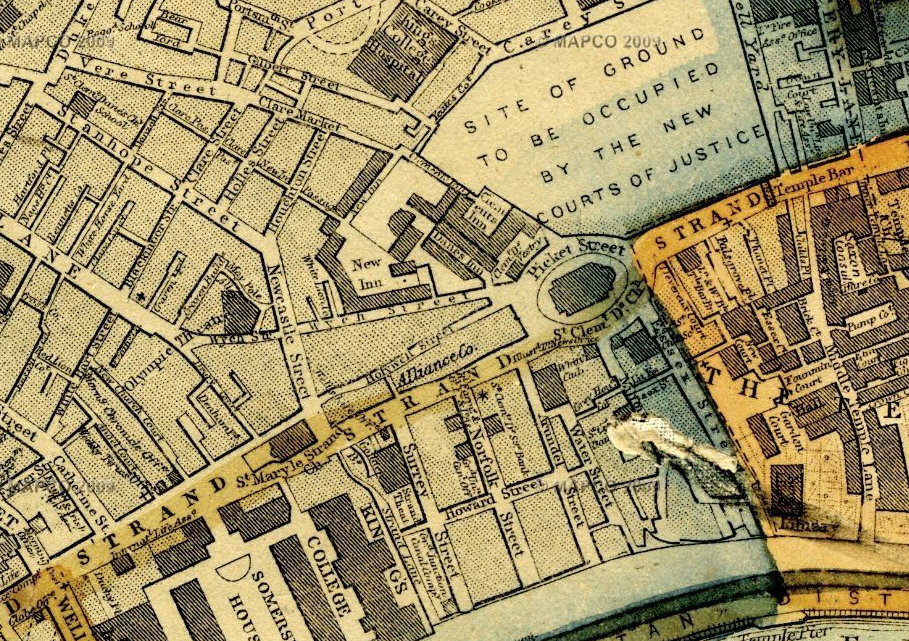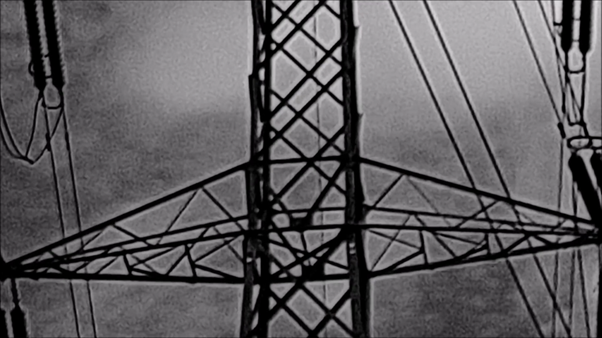WORDS: Alex Cochrane
Now a street in London’s lost history, Holywell Street was a narrow alleyway once notorious for radical politics and erotica…
Holywell Street was set amongst the kind of narrow, twisting streets and dingy courts that could shelter the denizens of many a dubious trade. With its overhanging fronts it was old, squalid, cramp London from the Elizabethan age, just off the fashionable Strand which was far more the bustling metropolis of a modern world city desired by the authorities.
It was named after one of the local holy wells, the sweet and sacred waters of St. Clements Church that still survives on the Strand today, and gave Holywell Street its nickname of the Backside of St Clements.
During the first few decades of the 19th century Holywell Street turned out radical publications flamed by the French Revolution. The street was a hotbed of radical thinkers, police spies, informers and publishers who regularly committed acts of sedition, blasphemy and obscenity. Political movements such as Chartism, a working class movement most active between 1838 and 1848, funded their more worthy output with profits from erotic publications. Radical satire used erotica to attack the morality and hypercritical nature of the establishment, the church, the monarchy and the aristocracy. Comic books were produced depicting the antics of the Prince Regent, his brothers and their mistresses while churchmen, bishops and nuns featured in group sex engravings, religious erotic satire being a particular speciality of Holywell Street. There were lewd poems about the frolics of famous people in bed, including Queen Victoria and Prince Albert. Activism was fired-up by depicting aristocrats enjoying opulent debauchery, especially the old English vice of flagellation.
Even as many political movements ultimately failed, and Holywell Street followed the money and turned more to erotica as a more lucrative trade, it still retained its radical satire. Erotica would later evolve into the better-known domain of Victorian aristocratic pleasure seekers with gentleman collectors such as Henry Ashbee, overlapping with the aesthetic decadent works of artists such as Aubrey Beardsley.
By 1834 there were an estimated 57 porn shops in Holywell Street selling novels, prints, etchings, catalogues on prostitute services, guides for Victorian homosexuals and flagellation connoisseurs. It was hardly a hidden world. The Victorian shops would have retained the raucous nature and prominent display of a medieval market rather than that of an invisible underworld. A letter to The Times in 1846 complains of the windows in the street which “display books and pictures of the most disgusting and obscene character, and which are alike loathsome to the eye and offensive to the morals of any person of well-regulated mind”.
 The biggest figure amongst Holywell Street’s publishers was William Dugdale – a forger, radical, plagiarist, pornographer and general shady character of the Victorian underworld. Henry Ashbee, the obsessive collector of erotica and works and also suspected to be Walter in My Secret Life – a sprawling secret sexual memoir of a Victorian gentleman, described Dugdale as “one of the most prolific publishers of filthy books”.
The biggest figure amongst Holywell Street’s publishers was William Dugdale – a forger, radical, plagiarist, pornographer and general shady character of the Victorian underworld. Henry Ashbee, the obsessive collector of erotica and works and also suspected to be Walter in My Secret Life – a sprawling secret sexual memoir of a Victorian gentleman, described Dugdale as “one of the most prolific publishers of filthy books”.
Dugdale was a master racketeer of the trade, happily splicing, separating and gluing together books in whatever way he could sell them. He pirated erotic publications and presented them as his own. He would divide one book in two to sell for more money. He sold old books as new and new books as old. There were books with glorious titles like Lady Bumtickler’s Revels, The Fanciful Extremes of Fucksters or the Pleasing Pastime of Frigging. Dugdale also happily sold books with suggestive titles such as Confessions of a Ballet Girl that turned out to be innocent in nature.
It couldn’t last forever. Dugdale, undeterred by regular prison sentences and stock seizures, was on trial again in 1857. His judge, an outraged Lord Campbell, regarded his trade as “a sale of poison more deadly than prussic acid, strychnine or arsenic”. It was also feared that this poison would excite the modern woman, already an emerging threat to the stability of the realm, to dangerous levels of lust and promiscuity.
Lord Campbell, along with the Society for the Suppression of Vice, introduced the world’s first law criminalizing pornography, the Obscene Publications Act 1857, and, for the first time, it gave the courts power to seize and destroy offending materials. Even at the time the law was strongly opposed and its legacy continues to cause controversy about what in Britain could be judged obscene, by whom and on whose behalf.
Dugdale died in 1868 in the Clerkenwell House of Detention, a Victorian prison whose underground catacombs still survive but are sadly inaccessible to the public. By 1901 Holywell Street was gone, subsumed by the widening of the east end of the Strand. The new Aldwych that survives today was grander, more manageable yet a dull institutional London.
The erotica trade, looking for new alleyways to thrive, started eyeing up the possibilities in Charing Cross Road and Soho. A new era was about to begin.
Alex Cochrane is based in Glasgow and blogs about exploration, travel, history, historical erotica and other curiosities at https://adcochrane.wordpress.com. You can also follow Alex on Twitter at @alexdcochrane










Loved this Alex thanks – passing on to Nigel at Any Amount of Books
I enjoyed your description of Dugdale: “general shady character of the Victorian underworld.” Sounds like a boss at the end of a video game level. Then again, I never played any video games where the boss handed you porn if you defeated him. Maybe that should be a video game.
He sounds like a nineteenth-century Larry Flynt, although I give the nod to Dugdale on creativity for publication titles. Lady Bumtickler’s Revels? I probably wouldn’t be able to put it down.
[…] When I was researching this article it was interesting to note how the site of Enon Chapel was, at the time, a stone’s throw away from Holywell Street. Holywell Street is a lost London way once notorious for radical politics and erotica. You can find out more about its fascinating history at Lost London: a Victorian Street for Friggers and Radicals […]
[…] By 1834 there were an estimated 57 porn shops in Holywell Street. […]
[…] The 120 Days of Sodom would end up hiding in a private Provencal library for most of the 19th century, but its reputation spread. Even amid the oppression of Victorian England, Sade and “120 Days of Sodom” became the focus of a thriving porn industry based on Holywell Street in London. […]